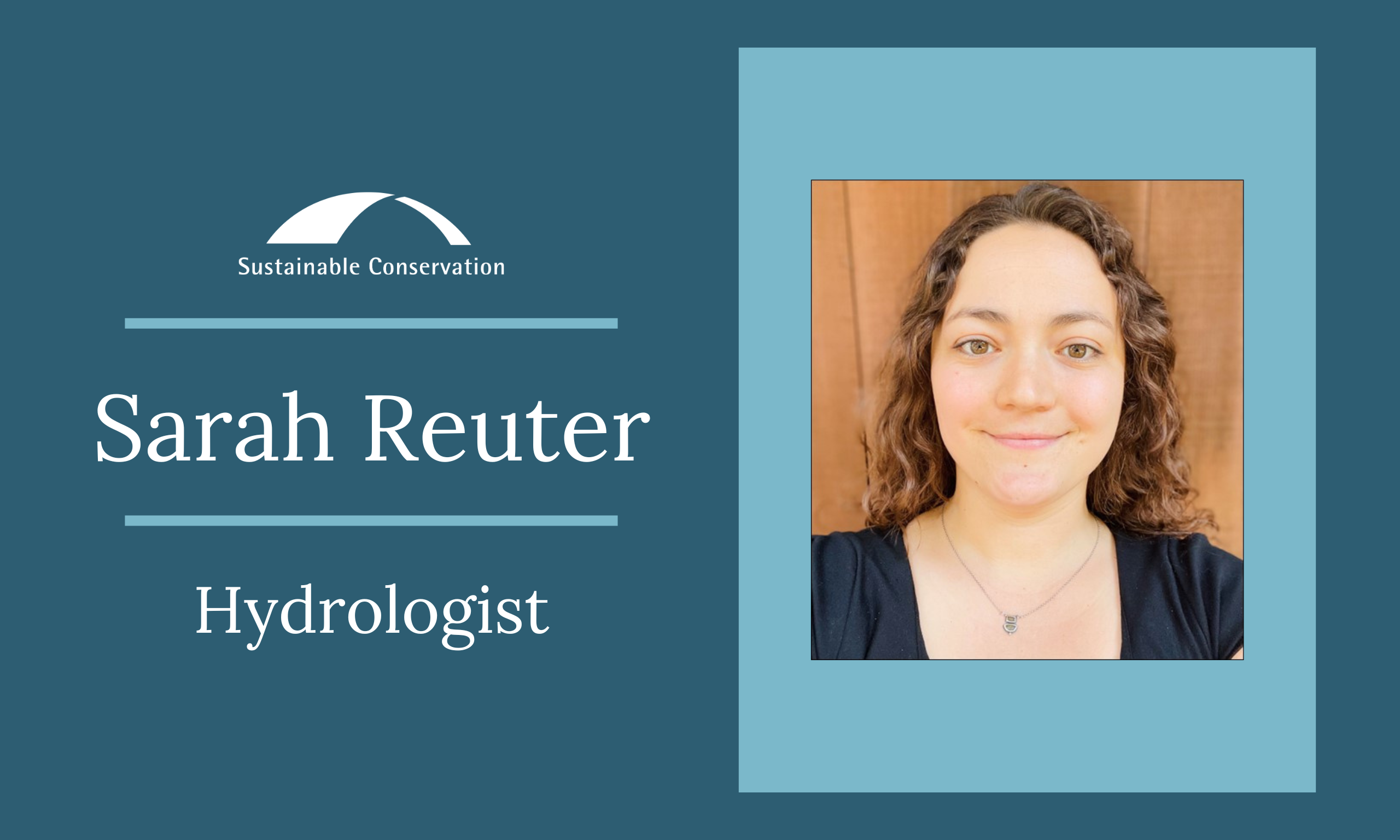
Join us in welcoming Sarah Reuter to the team as our staff hydrologist! Sarah Reuter has experience in hydrologic modeling, data analysis, coding, statistics, and GIS. She studied evapotranspiration and worked as a research assistant with a group at New Mexico Tech, building a water-balance model for the State of New Mexico. Her work involved investigating the relationship between rainfall, runoff, and aquifer recharge. She also has experience conducting research on rivers, and worked as part of the River Eyes program, conducting daily data collection along the Rio Grande as part of the effort to save Silvery Minnows during flow recessions. After graduate school she worked as a hydrologist for Daniel B. Stephens and Assoc. for three years where she was exposed to a large variety of projects all around the country. Much of her work involved modeling how contamination travels through groundwater and conducting statistical analysis on groundwater quality data. Sarah is from Fresno California, where she grew up hearing about groundwater supply and quality issues and she is passionate about working towards a sustainable water future for California.
Sarah earned a Masters Degree in Hydrology from New Mexico Tech and a BS in Earth Science from the University of California Santa Cruz.
What is hydrology?
Sarah: Hydrology, or water science, is the study of water and how it moves through the landscape.
What attracted you to this role and our work?
I grew up in California, so I’ve always been concerned with water supply and water quality issues, because that’s just what we talk about in the Central Valley.
I went to grad school in New Mexico, but I always had the goal of coming back to California and working in some way to address those water issues in the Central Valley. So when I saw this role, it seemed to be ideal for me. Sustainable Conservation has a good reputation and it’s a science-focused organization, but we also prioritize people and the environment in a way that I really respect.
There’s a goal of benefiting all parties, whether it’s environment, farmers, or people living in the Central Valley and in California. I’m very familiar with recharge from a science perspective, and I’ve done a lot of thinking about recharge throughout my life, whether it was in grad school or just as a Central Valley kid knowing that we needed more water underground. My grad school project specifically focused on finding out where recharge was happening in the state of New Mexico by working on a water-balance model for the entire state.
What project or initiative are you most excited to work on?
I’m really excited about the project that I’m currently working on, which is looking at how diverting floodwaters to farm fields for the sake of replenishing aquifers affects water quality.
Can you talk about your professional path before Sustainable Conservation? How did you get into water?
I graduated from UC Santa Cruz with a degree in earth science. And during my time there, I took hydrology and groundwater with Andy Fisher, who Sustainable Conservation knows well and does work with now. So that’s kind of a full circle moment there.
Classes like these confirmed my interest in studying groundwater. At grad school I took a water chemistry course, which is where my first background in groundwater quality comes from. I was also a research assistant working with a modeling group that created a massive Python model for tracking water all over [New Mexico]. While I was there, I specifically looked at where recharge was happening by taking core samples.
I also worked as part of a conservation effort for the silvery minnow on the Rio Grande. And that was just an awesome job doing fieldwork and documenting where the river was drying through an interagency effort. That was my introduction into how complicated and contentious water is.
Next, I moved into the consulting space where I did a lot of litigation work and flow and transport modeling to look at how contaminants move through the soil and into the groundwater. Working on contaminated sites was where I learned the most about water quality issues and ways to address them, along with the different interactions between soil, water, and chemicals.
What’s one thing about water quality or hydrology that you wish the average Californian understood?
That everything that gets put on the soil eventually ends up in our water. And some of those things take a very long time to break down. Also, whatever goes into your drain ends up in the water supply, which is a scary thought. And it’s not always supposed to, but no system is perfect. Everything is interconnected.
What do you like to do when you’re not pursuing a secure California water future?
I enjoy playing with my dog, water coloring, and being out in nature.
